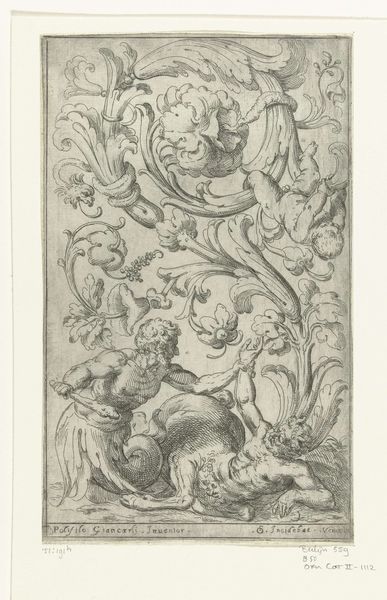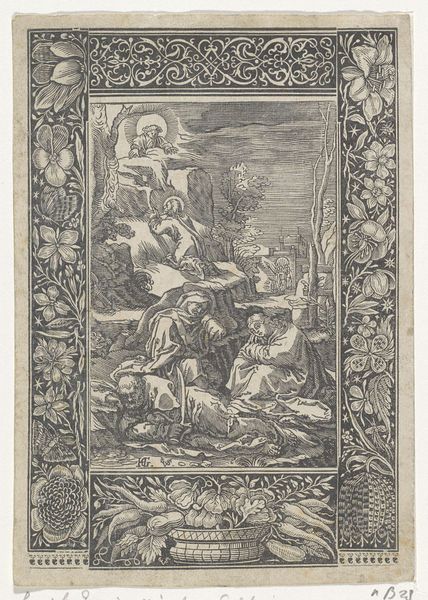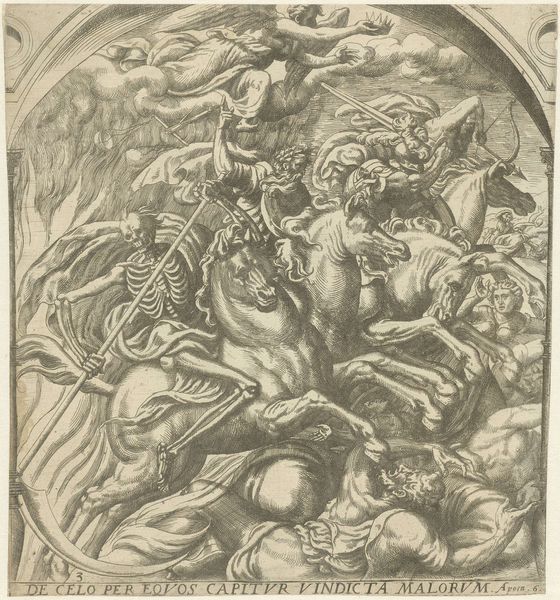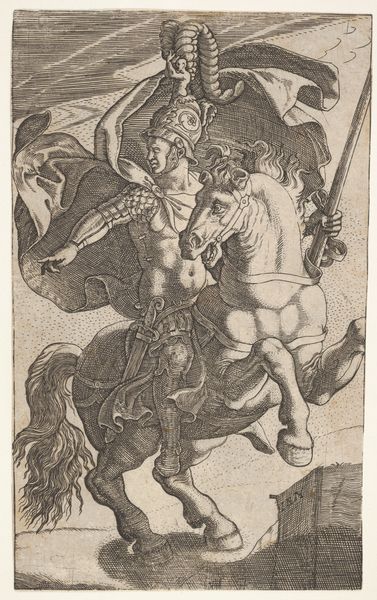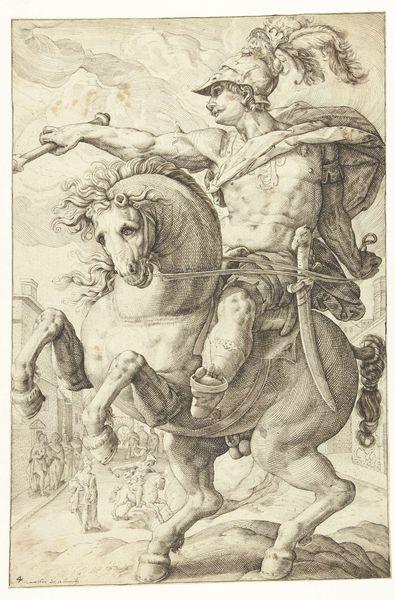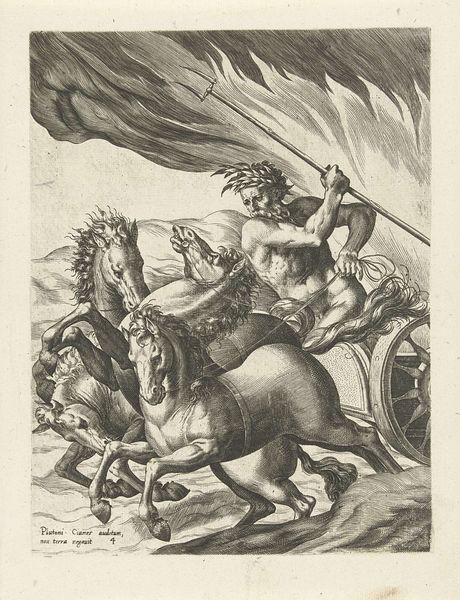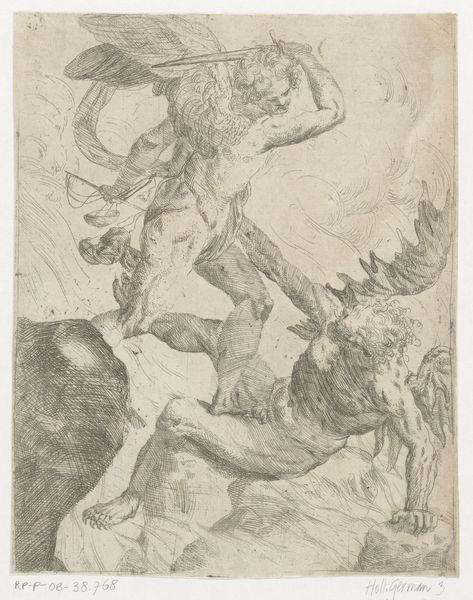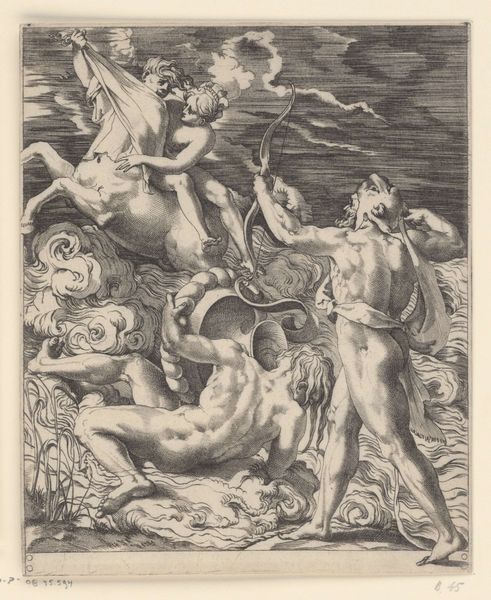
drawing, print, ink, engraving
#
drawing
#
narrative-art
#
pen drawing
# print
#
pen illustration
#
pen sketch
#
death
#
mannerism
#
figuration
#
ink line art
#
ink
#
pen-ink sketch
#
history-painting
#
engraving
Dimensions: height 119 mm, width 98 mm
Copyright: Rijks Museum: Open Domain
Editor: This is Jost Amman's "Marcus Curtius," created around 1580. It's an engraving, so lines define the image. The mood is intense; the horse seems to leap forward. I'm curious—what do you see in this piece? Curator: Immediately, the visual language speaks of sacrifice. Amman presents us with Curtius, a Roman hero, plunging into a chasm. Consider the horse; it's not merely transport, but a symbol of power and virility, willingly submitted to this act. Notice how the flames lick around the horse. Do you think they represent a destructive force, or something else? Editor: Perhaps the flames symbolize purification through sacrifice? I'm struck by Curtius's intense gaze; he seems determined. Curator: Precisely! His gaze directs us. Consider also the sword. It's not being used for battle, but is held aloft, almost as an offering. The sword is a symbol of Roman authority and strength; what message do you think is conveyed? Editor: So it shows how Rome is worth this ultimate sacrifice, even from one of its finest warriors. Curator: Yes, and it goes deeper. It reflects the enduring Roman ideal of civic duty and selfless courage. The image taps into cultural memory, reminding viewers of the values that supposedly built the Empire. The composition, with its dynamic energy, reinforces the bravery in the narrative. It speaks to how we remember heroes, and why. Editor: This makes me think about how stories and their symbols affect not only those who produced them, but how that symbolism impacts culture going forward. I never considered sacrifice in that context. Curator: Indeed. And now you can understand more clearly the purpose and strength such iconography carries.
Comments
No comments
Be the first to comment and join the conversation on the ultimate creative platform.


